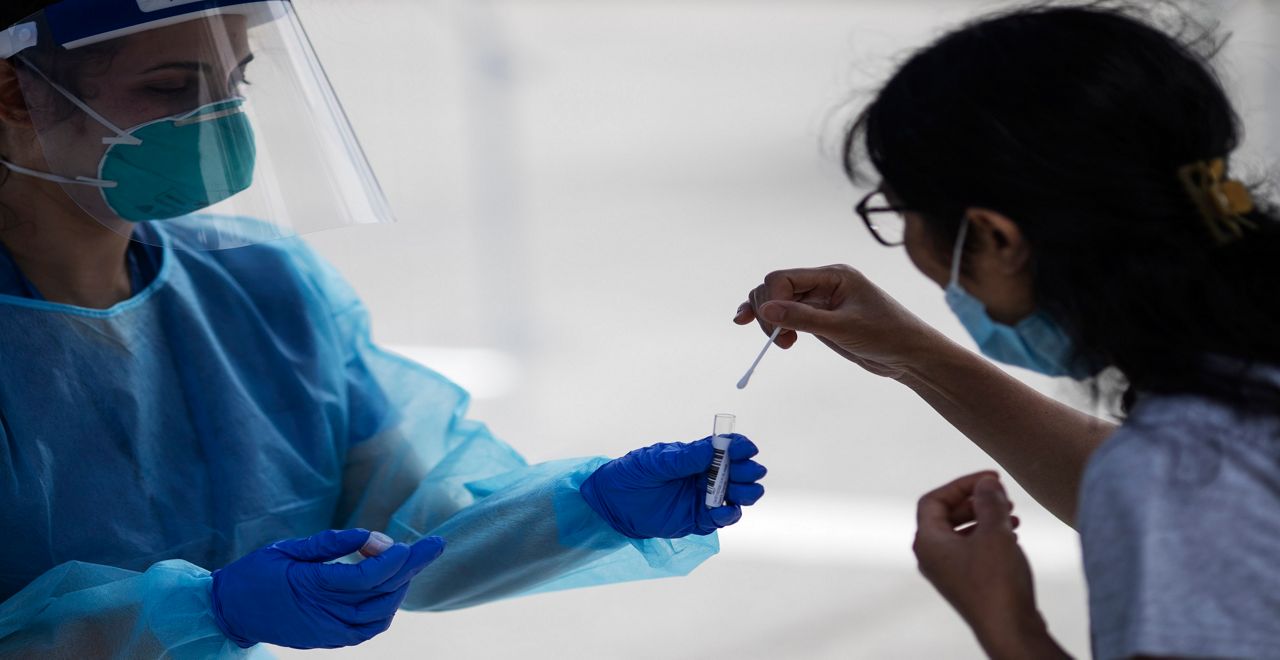MILWAUKEE, Wis. (SPECTRUM NEWS) — Thousands of Wisconsinites are getting tested for COVID-19 every day as the pandemic continues to spread across the state. But the current testing rates aren’t enough to effectively keep the virus at bay, according to a data model from the Harvard Global Health Institute.
The Harvard model uses population, case rates, and estimated number of contacts to determine how many tests each state should be performing. An analysis from The New York Times on Friday, which compares states using this model, lists Wisconsin as one of 34 states that are “far below” the recommended testing targets.
In the past week, Wisconsin’s testing rates have been about 48% of what the model recommends, the Times analysis shows. For comparison, Arizona is the furthest from its target, at 10% of recommended levels, while 12 states are at or exceeding target levels.
In total, more than 670,000 coronavirus tests have been conducted in Wisconsin since the beginning of the pandemic, the Wisconsin Department of Health Services reports.
Wisconsin’s testing peaked in early June, with 16,474 tests reported on June 3, according to DHS data archived by the COVID Tracking Project. So far in July, the state has typically tested around 10,000 to 13,000 people each day — although these numbers tend to dip on weekends.
These rates are in line with the state’s official testing plan submitted to the U.S. Department of Health and Human Services, which aims for about 11,000 tests per day. As that document puts simply, “Wisconsin’s testing strategy is that all Wisconsinites who need a COVID-19 test should have access to a test.”
But the Harvard model recommends even more widespread testing to stop the virus. The guidelines offer two different testing targets for states: a “mitigation” level and a “suppression” level.
At the mitigation level, states focus on testing anyone with symptoms and using contact tracing to test the people they might have exposed, with added social distancing and masking guidelines as necessary. For Wisconsin, this strategy would add up to about 19,200 tests per day — a number that's within reach for the state, as the DHS reports on Friday that the total lab testing capacity is 19,362. Even at this level, though, states face “a rollercoaster of recurring outbreaks” as they reopen, researchers write.
The eventual goal would be to reach suppression level testing: a broad and proactive approach that includes regular testing of people in high-risk environments like nursing homes and schools, even if they don’t have any symptoms. Such measures, paired with quick contact tracing and isolation, would help us “return to a new normal,” the researchers write. But to get there, the target for Wisconsin would be more than 70,000 tests each day.
With positivity rates on the rise again in Wisconsin the last three weeks, hitting 6.7% on Friday, COVID-19 continues to pose a major threat to the state. And nationally, the U.S. is adding new cases in record numbers. Researchers believe to stifle the virus’s spread, the country will need to massively scale up this testing effort, more than doubling the number of Americans getting tested each day.
“The pandemic is just getting started — it is time to invest in building the capacity and infrastructure to test millions of Americans every day, symptoms or not,” the Harvard team writes. “It will save many lives and billions of dollars.”
